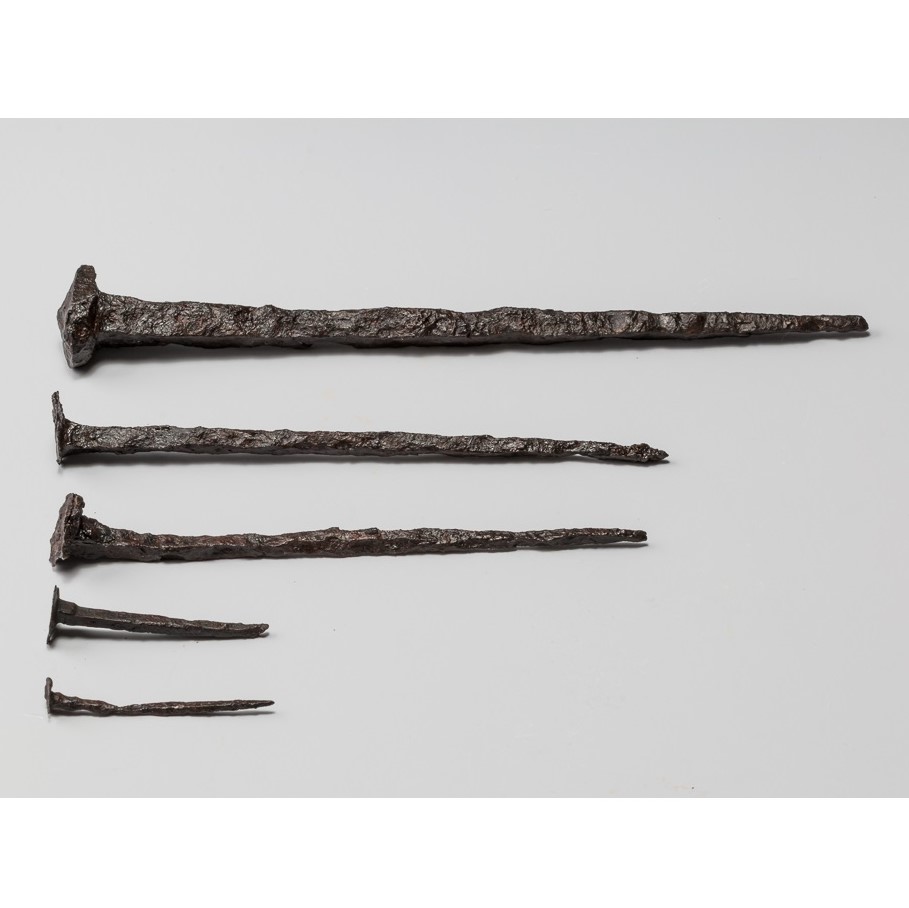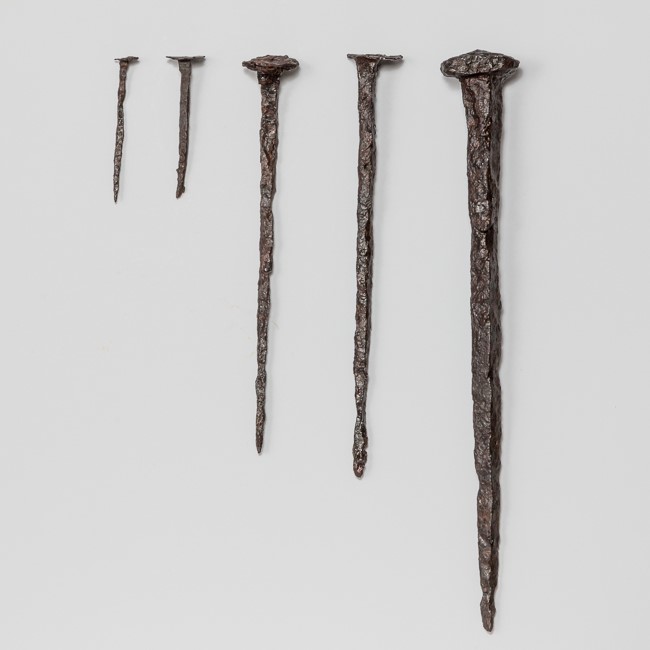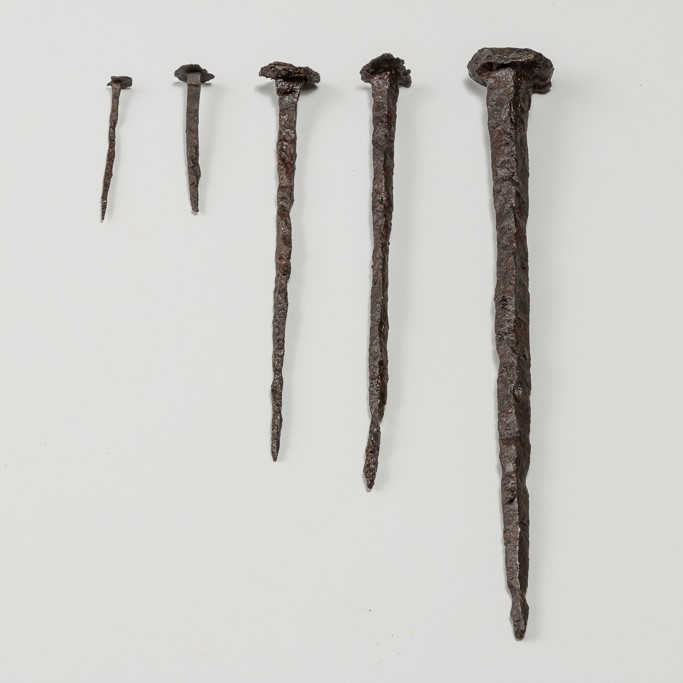Acquisition number: 2012.14
Iron. From the Roman hoard at Inchtuthil, Perthshire, Scotland. AD 83 – 90.
The group comprises one large nail (A1), two medium-sized nails (A2 and A3), and two small nails (A4 and A5). All the nails are square sectioned along the entire length of a tapering shank forming a four-sided tapered point (also called a diamond point). The head of nail A1 has also been formed into a rough pyramid, known as a rosehead. The other four nails have flat, disk-like heads.
Title: Five Roman Nails - 2012.14
Acquisition number: 2012.14
Author or editor: Glen Goodwin
Culture or period: Roman Imperial
Date: AD 83 - 90.
Material: Metal - Iron
Object type: Tools and instruments
Dimensions: 260mm (l)
Origin city: Inchtuthil.
Display case or on loan: 11
Keywords: Roman, Imperial, Agricola, Inchtuthil
M. McConchie, Five iron nails from the Roman hoard at Inchtuthil (Canberra, 2014).
2012.14
Five Roman Nails
Length: (A1) 260 mm; (A2) 190 mm; (A3) 175 mm; (A4) 63 mm; (A5) 64 mm.
Weight: (A1) 212.5g; (A2) 47.7g; (A3) 37.3g; (A4) 8.9g; (A5) 3.0g.
Iron. From the Roman hoard at Inchtuthil, Perthshire, Scotland. AD 83 – 90.
Presented by Mr Derek G.C. Abbott.
The group comprises one large nail (A1), two medium-sized nails (A2 and A3), and two small nails (A4 and A5). All the nails are square sectioned along the entire length of a tapering shank forming a four-sided tapered point (also called a diamond point). The head of nail A1 has also been formed into a rough pyramid, known as a rosehead. The other four nails have flat, disk-like heads.
All five nails have signs of corrosion including loss of density, shape distortion, pitting, flaking and discolouration. Nail A1 has a loss of material along the shank, and traces of a white adherent: a result of its removal from a plywood base on which the nails were previously displayed. Nails A2, A4 and A5 have a visible loss of material from around the head.
Conservation treatment and stabilisation on the nails was undertaken by Lisa Addison of the National Gallery of Australia in 2014.
A Roman fort was built in AD 83, near modern Inchtuthil, as the advance headquarters of the Roman general Gnaeus Julius Agricola (40 AD-93 AD), who played a significant role in the Roman conquest of Britain. It is thought to have held at least 5500 men.
Between AD 87 and 90 the garrison was withdrawn; and the Roman frontier was subsequently pulled back south. As the soldiers departed they left behind nothing that could be of any use to their enemies. They chose not to take their massive store of iron nails with them. Instead, they buried them in a pit almost four metres in depth and covered it with two metres of soil.
The site was left untouched and the pit remained hidden for nearly 1900 years. When the pit was uncovered in 1951 the cache of nails was discovered: 875,400 nails, in four sizes, weighing approximately seven tonnes. These are five of those nails.
Nails are simple shapes, and are not difficult to make quickly and in vast quantities. Asymmetrical, eccentrically-headed or poorly forged nails in the Inchtuthil hoard suggest some haste in their forging. The nails would have been used to hold fast fortification walls, gates, and other structures within the fortress. It is estimated, based on hand forged nails created by modern blacksmiths, that the abandoned hoard of 875,400 nails constitutes 11,000 hours of work. The decision to abandon such a large volume of material and work suggests that the material was commonly available, and the Roman army was confident in quickly producing or sourcing new supplies. Another theory suggests the army may have intended to return in order to recover the stockpile.
M. McConchie, Five iron nails from the Roman hoard at Inchtuthil (Canberra, 2014).


